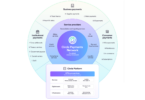Today the Financial Stability Board (FSB) published a report that reviews the progress on the regulation of Global Stablecoins. The ‘global’ terminology was created in response to Facebook’s unveiling of the Libra stablecoin, which has since been renamed Diem and substantially evolved. It’s particularly the potentially massive scale of stablecoins that concerns regulators because of the likely impact on payment systems and the financial stability risks.
The FSB emphasized that its work aims to complement that of other standard-setting bodies. Yesterday the BIS (CPMI) and IOSCO published a paper on stablecoins exploring how they should comply with existing principles for regulating payment infrastructures. And the head of the BIS, Agustín Carstens, discussed the breadth of policy responses.
In April last year, the FSB made ten high-level recommendations for regulating global stablecoins. Part of today’s report reviews progress in some countries and concludes that the steps taken are still at an early stage so far. For example, the United States is considering imposing rules on stablecoins and the UK conducted a consultation earlier this year.
Given that the focus is on supranational stablecoins, there’s also a concern that the steps being taken in the various jurisdictions are not consistent, leading to the risk of regulatory arbitrage. Each jurisdiction might classify a stablecoin differently, whether as a security, a crypto-asset or a payment infrastructure. And accordingly, they may apply existing regional regulations.
Hence there’s ongoing multinational cooperation, but those also take a variety of forms, such as supervisory colleges, informal networks or memoranda of understanding amongst countries.
In the meantime, Diem is getting ready to launch.






